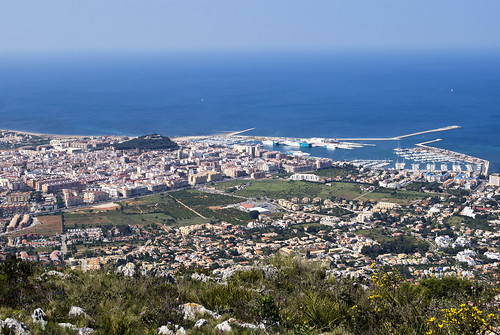The Costa Blanca town of Denia is located approximately halfway between Alicante and Valencia, and faces out towards the Balearic Islands. This historic town is home to around 44,000 permanent residents and enjoys an average yearly temperature of 20 degrees.

Like many towns along the coast of Alicante province, Denia has been ruled over by a number of different cultures in its history. The city was absorbed into the Roman Empire following the Punic Wars, during which time the city was an ally of Rome. Under Roman rule, Denia (then ‘Dianium’) enjoyed a period of great wealth and opulence as demonstrated by archaeological remains since found in the town.
Following the collapse of the Roman Empire and the Muslim conquest of Iberia, the town became ‘Daniya’ in the 11th century. It was ruled over by the Taifa kingdom which stretched from Denia to modern-day Alicante. In 1244 the town was captured by Christians and this led to the exile of much of the population. The town lay nearly uninhabited until it was repopulated by the Valencian government.
In more recent history, the town became an important part of Spain’s dry raisin production at the beginning of the 19th Century and was a significant trading hub, home to a community of English traders until the civil war. The dry raisin farming eventually gave way to citrus fruits and a strong toy production industry.
Located in the old railway building is the Toy Museum (Meseau dels Joguets), open daily from 10am to 1pm and 4pm to 8pm (with longer hours in the summer): entry is free. The museum explores the town’s booming toy production between 1904 and the 1960s. During this time, Denia was home to a number of large factories creating toys which were distributed throughout Spain and abroad. On display are hundreds of toys; dolls, sailboats, bicycles, carts, airplanes, horses etc. Exhibits show the change in production methods over time, particularly the change in materials from tin to wood to metal.
On a rocky hill overlooking the city sits Denia castle. Originally built by the Moors in the 11th and 12th centuries, structures have been added to the castle in subsequent centuries, such as the Red Tower in the 15th century. The castle houses an archaeological museum displaying artifacts, such as pottery and jewellery, which have been uncovered in the area. Many visitors find that the views from the castle walls alone are worth the €3 entrance fee and the walk uphill; the castle provides an excellent vantage point over the town and the Mediterranean coast. The best way to access the castle is via the stairs beside the city hall.



Denia is around a 70 minute drive from Alicante Airport and Drivalia Car Rental. To find out more visit the Denia tourist office website.
 Sweden
Sweden

